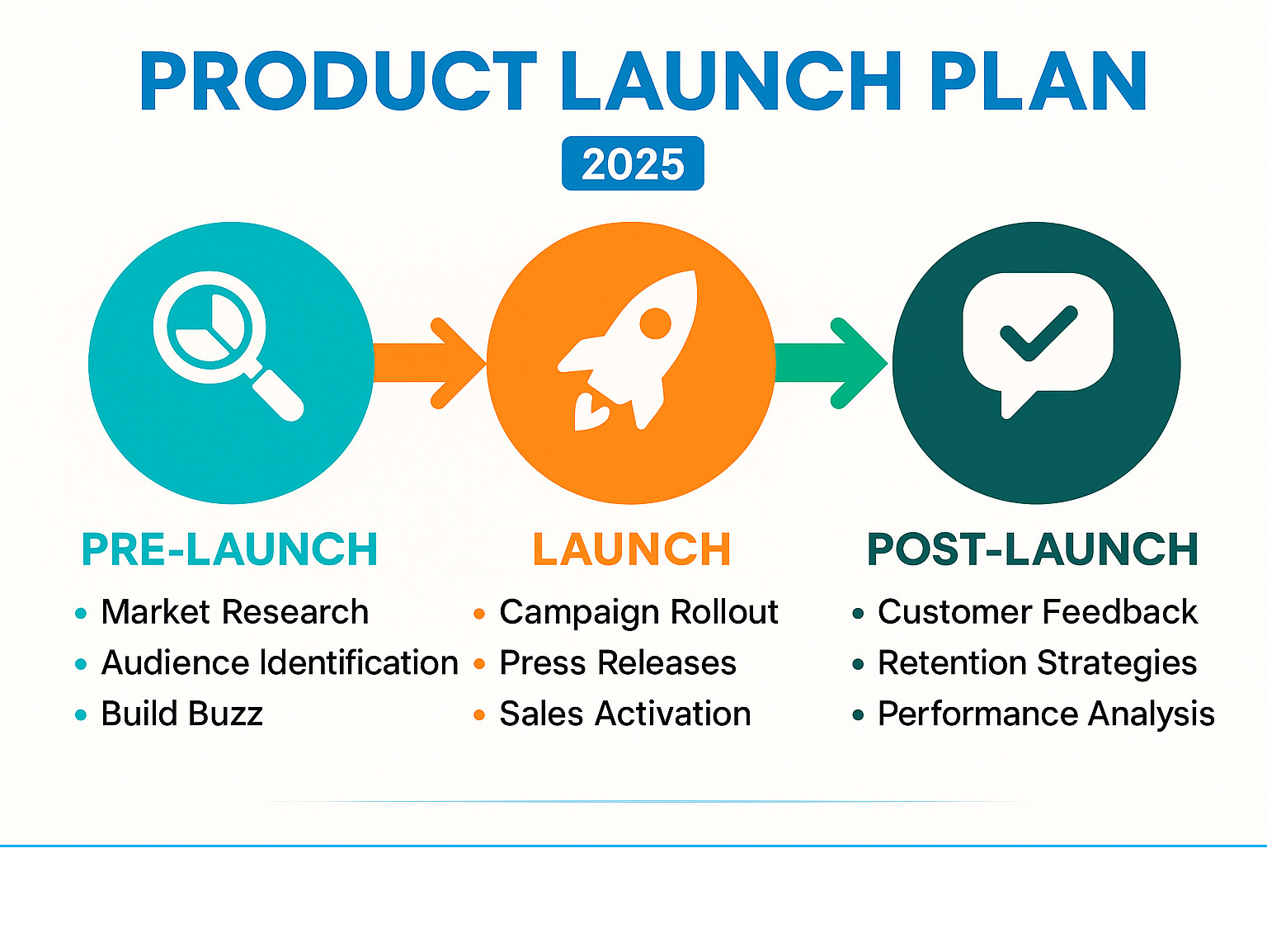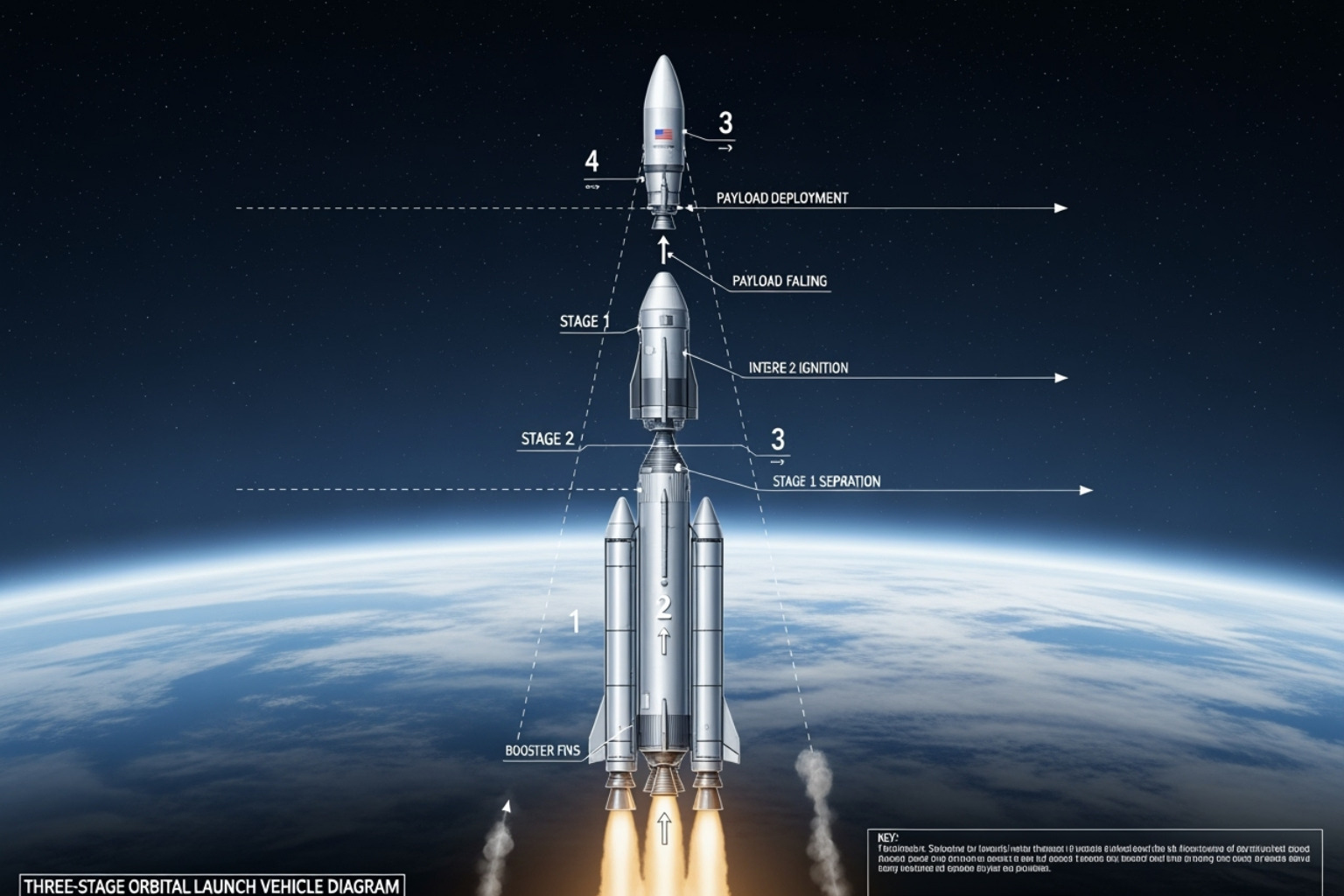From Zero to Hero: Your Winning Product Launch Marketing Plan
Build a winning product launch marketing plan. Navigate pre-launch, launch, and post-launch with AI, data, and expert strategies for growth.
Build a winning product launch marketing plan. Navigate pre-launch, launch, and post-launch with AI, data, and expert strategies for growth.

A product launch marketing plan is a strategic roadmap that coordinates all activities across pre-launch, launch, and post-launch phases to maximize awareness and revenue. A successful plan includes market research, target audience identification, brand positioning, channel selection, a clear timeline, and KPIs for tracking performance.
The statistics are sobering: 60% of developed products never make it to market, and of those that do, only half generate meaningful revenue. Poor marketing is a leading cause of startup failure, but these failures are preventable.
A well-executed plan does more than just announce your product. It creates anticipation, positions your solution, attracts ideal customers, and coordinates every touchpoint for maximum impact. It's the key to generating leads, building investor confidence, and establishing long-term growth.
I'm Tony Crisp, and for over two decades, I've helped tech startups and Fortune 500 companies like Nvidia, HTC Vive, and UC Irvine steer successful product launches. My experience has shown that the right framework can transform a product from unknown to market leader.

Product launch marketing plan helpful reading:
Think of your product launch marketing plan as constructing a skyscraper—you need a solid foundation. Our LaunchX methodology creates this unshakeable foundation, changing your product into a brand that commands attention and loyalty. Too many launches fail by focusing on flashy tactics without first understanding the market and crafting a resonant message.

Without knowing your market inside and out, your product launch marketing plan is on shaky ground. We start with a comprehensive SWOT analysis to understand your strengths and the competitive landscape, identifying gaps your product can fill. Then, we dive deep into buyer persona development using our CRISPx frameworks. This goes beyond demographics to uncover the psychographics and customer pain points that drive decisions. Understanding what keeps your customers up at night allows you to communicate with them, not at them, making your entire strategy more effective.
Next, we craft a compelling narrative. Your value proposition must be crystal clear. Through our Brand Strategy approach, we help you identify what makes your product genuinely different—focusing on better outcomes, not just better features. A powerful exercise from our LaunchX methodology is to write a mock press release early on. This forces clarity and helps you explain why people should care in simple, exciting terms. Your core messaging and brand identity should feel authentic, creating a product people don't just buy, but believe in.
With a solid foundation and sharp message, it's time for smart tactics. Channel selection is critical; your customers aren't everywhere, so you shouldn't be either. We strategically integrate content marketing, email marketing, and social media based on where your audience lives. For B2B launches, LinkedIn is often key, while B2C varies. Smart budget allocation focuses on high-return activities, with a contingency for the unexpected. The right tools are essential for execution: project management platforms for alignment, analytics for Data-Driven Customer Insights, and CRM and email platforms to nurture leads.
A product launch is a journey, not a single event. We break it down into three critical stages: pre-launch, launch, and post-launch. This phased approach, powered by our OrbitX methodology, uses customer psychology to build anticipation, maximize impact, and drive sustainable growth. This systematic approach to Growth Marketing ensures we're constantly building momentum.

The pre-launch phase is about generating buzz so customers are eager to buy on day one. Our OrbitX approach uses teaser campaigns, influencer outreach, and dedicated landing pages to build an email list of early adopters. We create a comprehensive press kit to facilitate media coverage and use countdown timers and waitlists to create urgency and exclusivity. This is where we create an insatiable desire for your product.
Launch day is when the rocket takes off. OrbitX tactics focus on a coordinated campaign for maximum visibility. Key activities include a launch event (like a webinar or live demo), press release distribution, and a full social media takeover. It's also critical to activate your sales team, ensuring they are fully briefed and equipped with sales collateral to engage with leads immediately. Over-communication with the team is essential for a smooth execution.
The launch isn't the finish line. The post-launch phase is crucial for turning adopters into advocates. OrbitX focuses on nurturing customer relationships and continuous improvement. We establish a customer feedback loop to gather insights for product development, and we leverage testimonials and case studies to build social proof. Key customer retention strategies include loyalty and referral programs. For example, Dropbox's growth from 100,000 to 4 million users was fueled by its referral program. Finally, we constantly analyze launch performance against KPIs to optimize our strategy.
The days of "spray and pray" marketing are over. A successful product launch marketing plan runs on data, powered by AI, and guided by real-time insights. At CRISPx, we use technology to amplify human creativity, making smarter decisions faster. Think of AI as your marketing co-pilot, handling the heavy lifting of data analysis and optimization so you can focus on strategy.

AI-Driven Content Marketing is a game-changer for your launch. AI enables content personalization at scale, adapting your message based on user behavior. Predictive analytics helps forecast which channels and content will perform best, while sentiment analysis monitors public perception in real-time. By automating repetitive tasks and using chatbots for customer support, your team is freed up to focus on high-level strategy and innovation. Our AI-powered solutions ensure data-driven creativity is at the heart of every launch.
Knowing which metrics matter is key. We focus on SMART goals and track the KPIs that truly drive success. Key metrics for a product launch marketing plan include:
Continuous evaluation allows for agile adjustments. You can measure and compare your results by setting up robust analytics from day one.
Even the best plans can hit turbulence. Preparation and agility are key to recovery. Common pitfalls to avoid include budget overruns, poor marketing execution, bad timing, ignoring customer feedback, and a lack of internal alignment. A comprehensive plan helps anticipate these challenges. Learning from what didn't work for other companies provides a playbook of what to avoid, but a solid plan is your best defense.
Studying successful product launches reveals patterns. They aren't random; they are carefully crafted strategies that tap into human psychology. Understanding these approaches helps design a product launch marketing plan that creates a movement. We've identified three models that consistently deliver exceptional results.
| Launch Model | Key Tactics | Focus | Success Examples |
|---|---|---|---|
| The Secrecy & Hype Model | Controlled leaks, theatrical presentations, exclusive previews | Building anticipation through mystery | Apple iPhone launches, surprise product drops |
| The Community-First Model | User-generated content, beta testing, referral programs | Authentic relationships and word-of-mouth | Dropbox's referral growth, Slack's beta community |
| The Experiential Model | Immersive events, product demos, pop-up experiences | Memorable brand interactions | Tesla's bold presentations, Nike's athlete partnerships |
These models align with our LaunchX and OrbitX methodologies, leveraging growth marketing and psychological triggers for lasting impact.
This model, perfected by Apple, transforms a product reveal into a cultural event by building mystery and anticipation. It works by using controlled information leaks to fuel speculation, theatrical presentations like Apple's event strategy, and creating an air of exclusivity with limited availability. This taps into the human desire for what is scarce or secret.
This approach builds loyalty and advocacy by recognizing that satisfied customers are your best marketers. It relies on user-generated content for authentic social proof, powerful referral programs like Dropbox's, and early adopter feedback from beta testing groups. This transforms customers into partners, creating a loyal fanbase that drives sustainable growth.
This model forges emotional connections by letting people experience your product firsthand. Immersive events and product demos, like Tesla's bold Cybertruck reveal, create viral buzz and memorable brand interactions. Pop-up shops and roadshows bring the product directly to customers, while partnerships with influencers create compelling, authentic experiences.
These models aren't mutually exclusive. The best product launch marketing plans often blend elements from each to fit their brand and audience.
Here are answers to the most common questions we encounter at CRISPx about creating a successful product launch plan.
A product launch plan is the comprehensive, cross-functional roadmap to bring a product to market. It coordinates product development, marketing, sales, and operations, covering everything from logistics to internal training.
A product marketing plan is a critical subset of the launch plan. It focuses specifically on creating demand and driving adoption through messaging, positioning, channel selection, and promotional activities. The launch plan gets the product to market; the marketing plan ensures people buy it.
The most critical components are:
The sweet spot is 4-6 months before your target launch date for any significant product. This timeline allows for thorough research, strategy development, quality content creation, building pre-launch momentum, and ensuring complete internal alignment. Starting early doesn't just reduce stress—it dramatically increases your chances of success.
Your product launch marketing plan is the blueprint for your product's future. A winning strategy can transform an unknown product into a market leader, while poor planning can doom even the most innovative solutions.
We've covered how to build a solid foundation with the LaunchX methodology, execute a phased launch with OrbitX, and leverage AI and data to amplify your efforts. This systematic approach takes the guesswork out of launching, positioning your product for success with data-backed strategies.
At CRISPx, we turn complex launch challenges into clear, actionable plans. Our DOSE Method™ combines the strategic thinking of LaunchX, the psychological insights of OrbitX, and the power of AI-driven marketing to create launches that drive real results.
Your product has a story to tell. Give it the strategic launch it deserves.
Ready to turn your product into a market leader? Launch your product with an expert partner and let's build something legendary together.